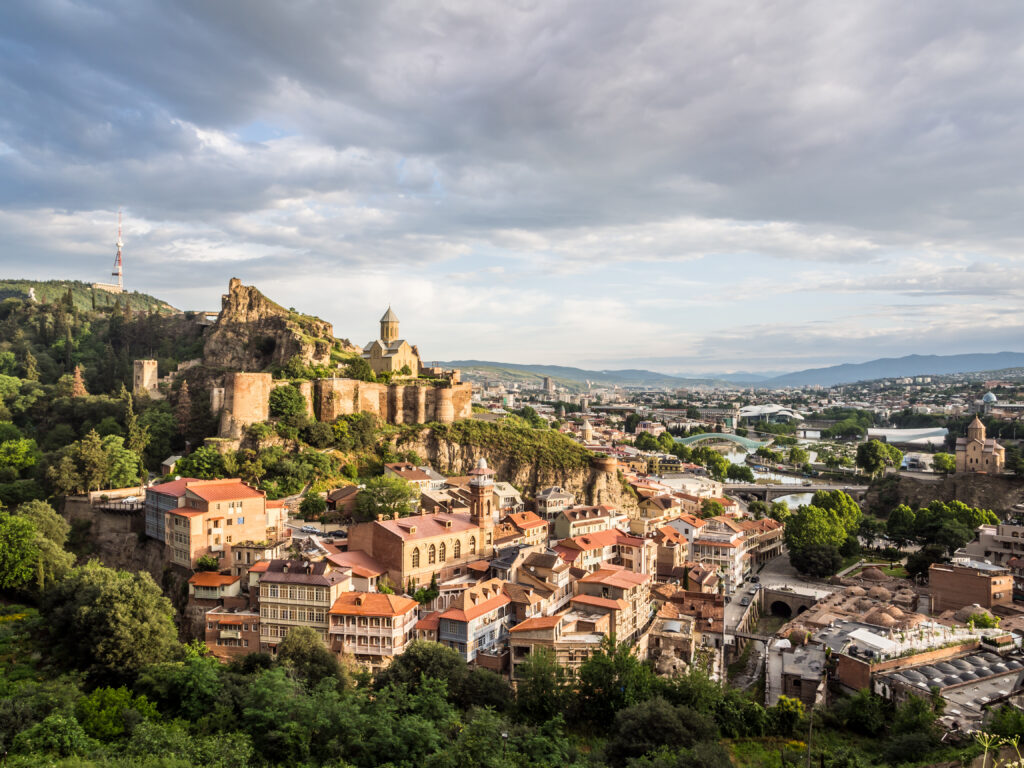Surrounded by hills, sliced in two by the Mtkvari (Kura) River, with tree-lined boulevards, charming lanes, towering churches and pastel-painted houses, Tbilisi is unexpectedly lovely.
Like a lovely lost kingdom, Georgia’s capital city lies deep in the country’s heartland, watched over by ancient towers and churches. The central city unfurls along Rustaveli Avenue, the intriguingly eclectic architecture reflecting Georgia’s dynamic history.
Broad and leafy streets, grand neo classical buildings and space-age modern designs sit alongside ancient churches, mosques, synagogues and a teasing maze of twisting, balconied side streets. Here and there, honeysuckle blossom and mulberry trees give shade to surprising courtyards.
Founded in the 5th century, the city has always attracted people from around the world, illustrating Georgia’s ancient role as a merging point of cultures along the Silk Road. Today, most trips to Georgia start in Tbilisi, often striking travelers as both reassuringly familiar and genuinely exotic. The name Tbilisi derives from the Old Georgian word “Tpili”, meaning warm and was given to the city because of the area’s numerous sulfuric hot springs.
Located in East Georgia, this city of approximately 1.5 million people sits within a large basin surrounded by hills. The Mtkvari River slips purposefully through its streets.
The summer months in Tbilisi are long, dry and hot and the winters are relatively cold. July is the hottest month with an average temperature of 24 °C. January is the coldest month with an average temperature of approximately 1 °C and snow falls on average 15–25 days of the year.
